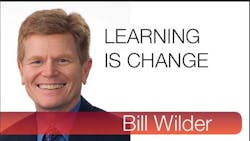It’s been said that people don’t mind change, but they mind being changed. This idea is worth thinking about in the context of organizational and personal change.
It reminds me of the classic musical, Fiddler on the Roof. Remember when Tevye promises his eldest daughter in marriage to man she doesn’t love? She’s miserable, and so is everyone else. Clearly, something has to change.
In this story, Tevye’s wife emerges as the change agent. By concocting a dramatic dream involving a dead relative’s warning, Golde plays on Tevye’s emotions and creates a “pain point” around the situation.
It works. Tevye believes the dream and its prediction about what might happen if he doesn’t act. He’s now sufficiently motivated to change. He takes the needed action, and his daughter gets to marry the man she loves.
Let’s be clear here. I’m not advocating making up stories to get your employees on board with a change. Manipulation never works. Transparency and truthfulness are key to any successful project. But we can take a lesson from Golde’s playbook all the same.
The key takeaway is that Golde doesn’t try to make Tevye change. Instead, she lays the groundwork for him to want to—and she does it in a way that makes sense to him. As a devout and rather simple man, he responds well to the superstitious dream story.
Jeffrey Hiatt, author of the popular ADKAR model of individual change, says people have to become aware of the benefits of change (or the consequences of not doing so), for change to be sustainable. After that they have to grow into wanting, or desiring, the change. Awareness and desire are the first two steps in Hiatt’s model: Awareness/Desire/Knowledge/Ability/Reinforcement. Golde’s made-up dream plants the awareness in Tevye’s mind, and helps him want to change.
According to Hiatt, the desire stage in this process is easy to miss. Managers are often so sure that the proposed change is a good idea that they expect employees to move immediately from awareness to desire. But this doesn’t always happen. Appealing to employees in ways that address their personal concerns goes a long way toward building desire for change.
The good news is that modern change agents have all kinds of proven tools and resources for creating awareness and encouraging desire.
About the Author
Bill Wilder
Founder and Director
Bill Wilder, MEd, is the founder and director of the Life Cycle Institute, the learning, leadership and change management practice at Life Cycle Engineering (www.LCE.com). The Institute integrates the science of learning and the science of change management to help organizations produce results through behavior change.
Bill led the creation of the 3A learning process that incorporates the concepts of active learning and change management. He has worked with many organizations to develop learning and change management solutions that engage people and drive accountability for behavior changes that deliver results.
Bill is a certified Prosci Change Management professional and is one of the few Prosci Authorized Training Provider Certified instructors in the world. He is the author of several articles, white papers and videos on the topics of learning and change management.
